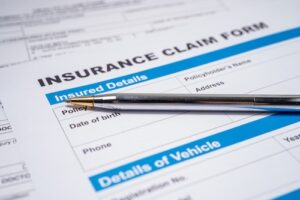Definition of Uninsured Motorist Coverage
Uninsured Motorist Coverage (UM) is a critical component of auto insurance that provides financial protection to individuals involved in car accidents with drivers who lack proper insurance coverage or are deemed uninsured. UM coverage is designed to safeguard policyholders by helping them recover damages, medical expenses, and other losses when they are in an accident caused by a motorist who cannot adequately cover the costs due to a lack of insurance.
Key elements and principles related to Uninsured Motorist Coverage include:
- Coverage Limits: UM policies specify coverage limits, which determine the maximum compensation available to the insured. Policyholders choose these limits based on their preferences and state regulations.
- Hit-and-Run Accidents: UM coverage commonly applies in hit-and-run accidents where the at-fault driver leaves the scene and remains unidentified. In such cases, the uninsured motorist is treated as an unknown or phantom driver.
- Underinsured Motorists: UM coverage can also extend to underinsured motorists who have insurance but insufficient coverage to fully compensate the injured party for their damages. This is particularly relevant when the at-fault driver’s insurance limits are lower than the injured party’s UM coverage limits.
- No-Fault vs. Tort States: The operation of UM coverage may vary depending on whether a state follows a no-fault or tort-based insurance system. In no-fault states, injured parties typically turn to their own insurance for compensation first, while in tort states, they may seek compensation directly from the at-fault driver. UM coverage remains valuable in both scenarios.
- Stacking: Some jurisdictions allow policyholders to “stack” UM coverage by combining the coverage limits of multiple vehicles on the same policy to increase available compensation in accident situations.
UM coverage plays a crucial role in protecting policyholders in scenarios involving:
- Uninsured Drivers: Accidents with drivers who lack any auto insurance coverage. UM coverage is essential to provide options for recovery in such situations.
- Hit-and-Run Accidents: When the at-fault driver flees the scene, UM coverage steps in to compensate for damages incurred by the insured party.
- Insufficient Insurance: Cases where the at-fault driver has insurance, but the coverage limits fall short of covering the full extent of the injured party’s damages. UM coverage bridges the gap.
- Pedestrian or Cyclist Accidents: UM coverage can apply when policyholders are pedestrians or cyclists involved in accidents with uninsured or underinsured motorists.
To utilize UM coverage, policyholders typically need to report the accident promptly to their insurance company, cooperate with the claims process, and provide necessary documentation, including evidence of the uninsured or underinsured status of the at-fault driver and proof of their damages.
In summary, Uninsured Motorist Coverage (UM) is a fundamental component of auto insurance that provides financial protection to individuals involved in accidents with uninsured or underinsured drivers. UM coverage ensures that policyholders can recover damages, medical expenses, and other losses when the at-fault driver lacks sufficient insurance coverage. It serves as a critical safety net, offering peace of mind and financial security while on the road. Policyholders should carefully review their insurance policies to understand the specific details and limits of their UM coverage to make informed decisions about their auto insurance needs.





